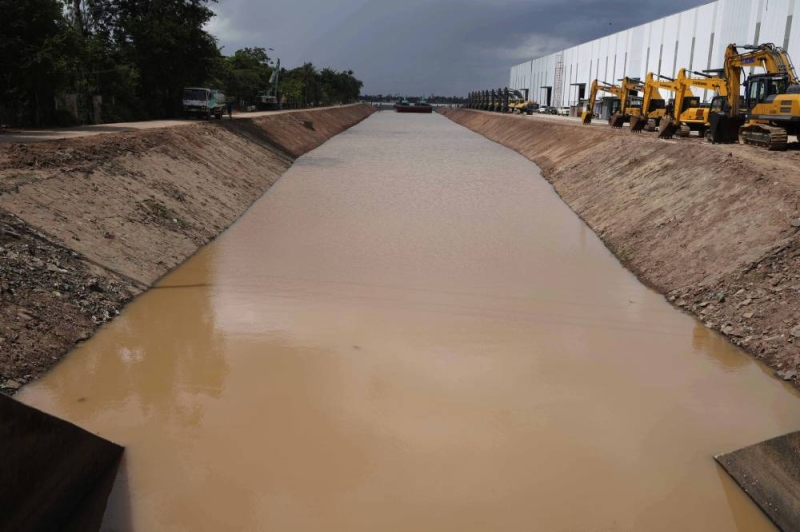Sherpa trains in US for Everest
Sherpa trains in US for Everest
Published: 07:28 pm Aug 17, 2009
DENALI NATIONAL PARK: PhuNuru Sherpa does not climb the world's highest mountain for thrills. It's his job. The job is dangerous, often deadly. That's because many of the Sherpas working for expedition climbing groups on the more than 29,000-foot (8,839-metre)-tall Mount Everest don't have basic skills necessary to safely do the job. PhuNuru wants to change that. "We have a big problem on Everest," he said. The 29-year-old married father of two girls spent a month this summer in Alaska getting job training on 20,320-foot (6,194-metre) Mount McKinley. He also spent three weeks on 14,411-foot (4,393-metre) Mount Rainier in Washington. It turns out that Mount McKinley, the highest peak in North America, was the perfect classroom. PhuNuru was part of a five-person mountain patrol. While on McKinley he joined in a half-dozen rescues, including helping a climber suffering from high-altitude pulmonary edema, a woman buried in an avalanche and a man who lost his sight. About once a week PhuNuru brought rescue supplies up the mountain. "If something needed to be done, his pack was on and he was ready to go in five minutes," said Brandon Latham, a mountaineering ranger at McKinley. PhuNuru joined McKinley's high mountain ranger patrol on June 3. He had barely settled in when rangers at the 14,200-foot (4,328-metre) camp got an emergency call. Two men who were roped together had fallen a couple of thousand feet (metres). PhuNuru was one of the first rescuers to reach the climbers. "Me and two friends go running up there, take some oxygen, some medical kits and everything we can carry," he said. "We go there and they both already dead." PhuNuru helped recover the bodies of Dr. John Mislow, 39, of Massachusetts, and Dr. Andrew Swanson, 36, of Minneapolis. The bodies were flown off the mountain. Four people died on McKinley this year. Since 1932, 106 people have been killed on the mountain - about half as many as on Everest. Thirty-nine bodies remain on McKinley. As many as 150 bodies remain on Everest. PhuNuru received a scholarship from the Alex Lowe Charitable Foundation in Montana to come to the United States for training. Alex Lowe was one of the world's most talented mountaineers who twice summitted Everest. He died in an avalanche in the Himalayas on Oct. 5, 1999, where his body remains. "He loved the people in Nepal and Tibet," said Jennifer Lowe-Anker, president of the foundation and Lowe's wife when he died. "He talked to me about how scary it was, how untrained any of them were on the mountain." In 2004, the foundation established the Khumbu Climbing School in PhuNuru's village in Nepal. About 30 students were in the first class and about one-third had already summitted Everest, but not one of them knew how to tie a figure-eight knot used in rock climbing to secure climbers to their harnesses, Lowe-Anker said. "Many were using what they called yak knots, kind of a granny (knot) tied a hundred times. They now know how unsafe that was," she said. PhuNuru, who has summitted Everest four times, is an instructor at the school. When he returns to Nepal at the end of October, he will share what he learned. The knowledge will save lives, he said. "All people (are) trying to go to summit and people get sick on the mountain and taking them down is very critical," PhuNuru said. PhuNuru said his goal is to establish a professional rescue team on Everest. Even though more than 200 people have been killed on Everest, the mountain has no rescue team. If a climber needs help, it is up to expedition guides to decide if a rescue should be attempted. Sometimes that means telling clients who have paid tens of thousands of dollars to summit Everest that their dream will have to wait. Sometimes it means that help comes too late. That was the case with British climber David Sharp in 2006. Dozens of climbers who were headed to the summit walked past Sharp lying in a rock alcove on Everest as he slowly froze to death. By the time the decision was made to send a Sherpa to help Sharp, it was too late. The Sherpa pulled Sharp from a rock alcove and placed him in the sun and gave him oxygen, but his limbs were frozen in place. He couldn't walk, even with assistance. Sharp was placed back in the alcove where he was found dead the next day. A week later, Sherpas rescued another climber who was left for dead near the same spot. Author Nick Heil wrote about the infamous 2006 climbing season on Everest in which 11 people died in his book "Dark Summit." "It is an extremely risky proposition to try and stage a body removal up high," Heil said. "Nowadays people are kind of prepared when they go up to a place like Everest to see corpses." Some of the bodies of people who have died on Everest are within sight of the climbing routes, remarkably preserved in the extreme cold. PhuNuru said it would be better to get the bodies off the mountain, but Heil said removal is not always possible. "After a season or two these bodies are effectively welded into the landscape," he said. "You literally have to chisel them out." PhuNuru said body removal pays better than other jobs on Everest but many Sherpas find the work distasteful. For those that want to do it, the rescue and roping techniques he learned this summer will be useful, he said. "We don't want to leave any body on the mountain," PhuNuru said.



